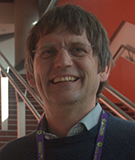
International Association of Seismology and Physics of the Earth’s Interior (IASPEI)
At the Sixth International Congress of Geography (London, 1895), Professor G. Gerland (Germany) pointed out the necessity of an international cooperation in seismology. At the Seventh Congress (Berlin, 1899), a Commission séismologique permanente was created. The Association Internationale de Séismologie was created at a subsequent conference in Strasbourg, 1903. At the first IUGG General Assembly (Rome, 1922), it became one of the constituent Sections of the Union. It took its present name at the IX IUGG General Assembly (Bruxelles, 1951).
IASPEI promotes the study of earthquakes and other seismic sources, the propagation of seismic waves, and the Earth’s internal structure, properties, and processes. Scientists participating in IASPEI initiate and co-ordinate research and scientific exchanges that demand co-operation among countries. Work on specific topics is carried out through commissions, sub-commissions, committees and working groups formed to meet specific needs of new, exciting problems as they emerge.
IASPEI’s‘ structure and themes:
Contact Information:

Johannes SCHWEITZER, IASPEI Secretary General
NORSAR
Gunnar Randers vei 15
P.O. Box 53
2007 KJELLER
NORWAY
IASPEI website: www.iaspei.org
